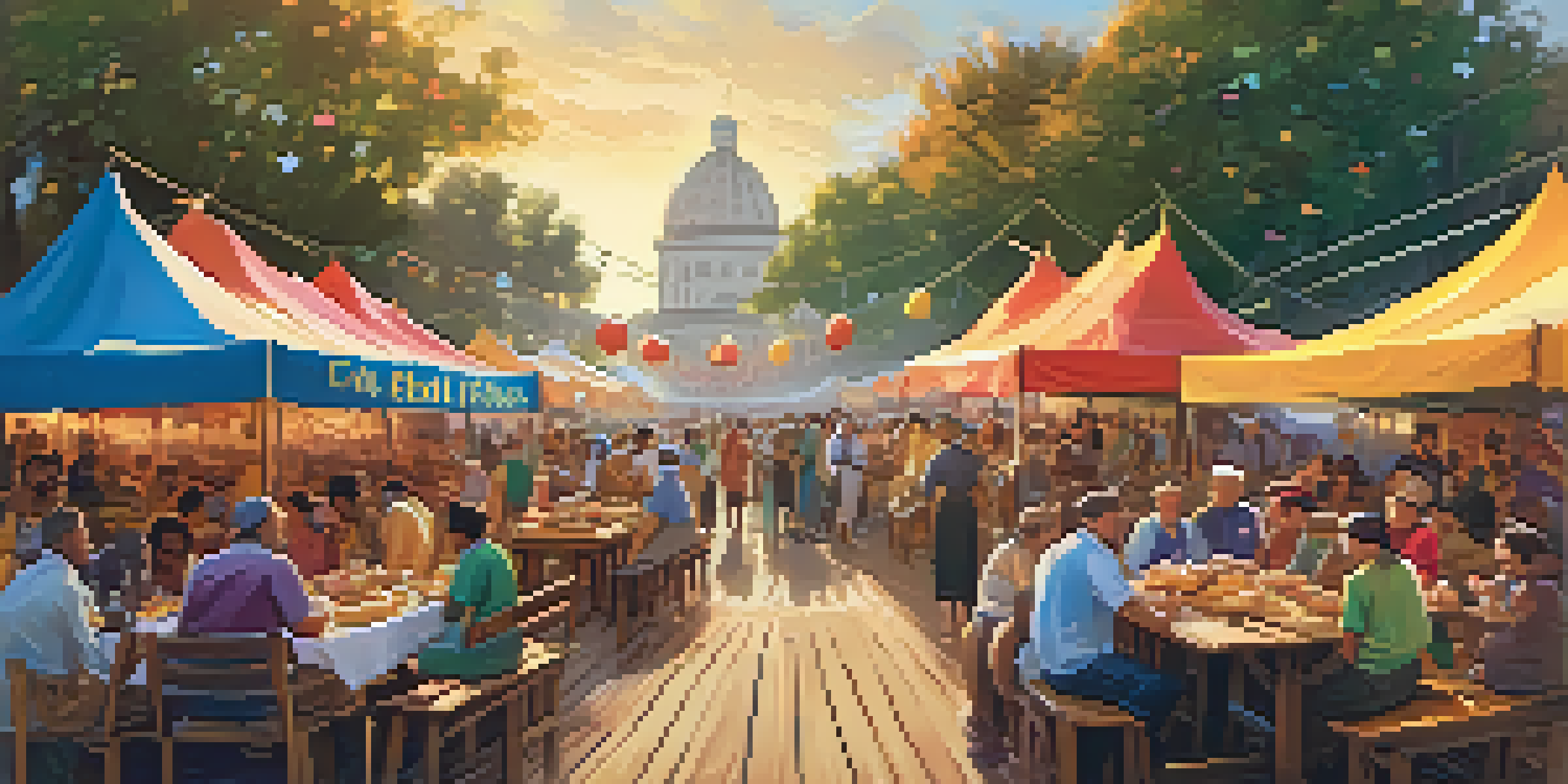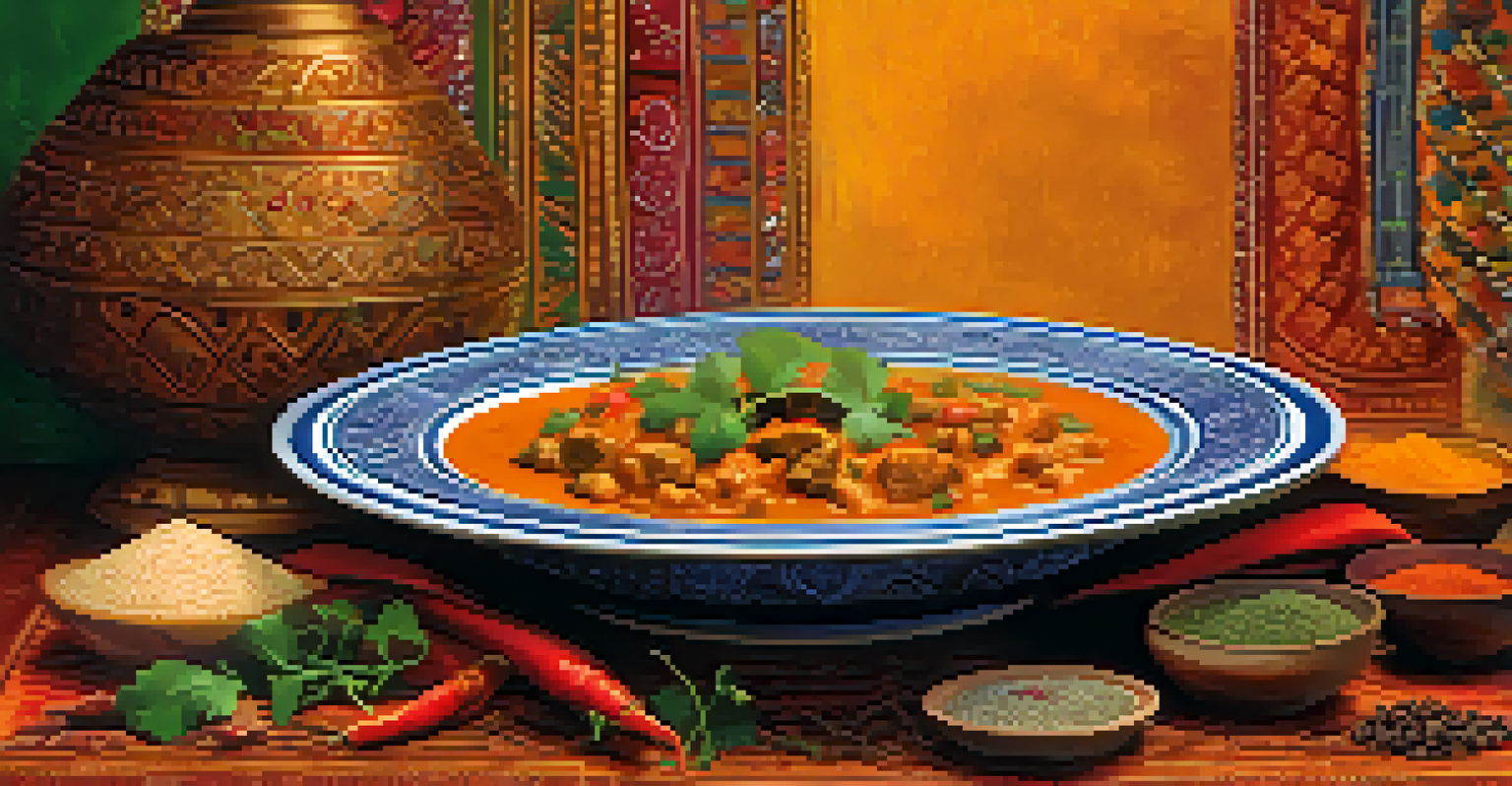Culinary Storytelling: The Tales Behind Regional Dishes

The Essence of Culinary Storytelling: What Is It?
Culinary storytelling weaves together history, culture, and flavors, creating a rich narrative around food. It's not just about what’s on your plate; it’s about the stories that make those ingredients meaningful. From family traditions to regional customs, every dish has a tale to tell.
Food is our common ground, a universal experience.
For instance, consider a simple bowl of pasta. It might seem ordinary, but its origins can take you back to Italy’s countryside, where families gather to share meals and memories. This connection to the past enhances our appreciation for the food we enjoy today, making each bite a journey through time.
By exploring these narratives, we can connect more deeply with our culinary experiences. Each dish invites us to learn about the people who created it, allowing us to savor not just flavors, but stories that transcend generations.
Regional Dishes: A Window into Local Cultures
Every region boasts dishes that reflect its unique cultural identity, often influenced by local ingredients, customs, and history. For example, the spicy curries of India tell tales of ancient trade routes, where spices were exchanged and culinary techniques were shared. Each bite of curry carries centuries of tradition.

In contrast, the comforting stew of Irish cuisine symbolizes community and warmth, often cooked in large pots to feed families and neighbors alike. These dishes are more than just meals; they are embodiments of cultural values and social bonds.
Culinary Stories Enhance Experience
Culinary storytelling connects flavors with histories, enriching our appreciation for the food we enjoy.
By understanding the stories behind these regional dishes, we gain insight into the lifestyle and traditions of the people who create them. It’s a delicious way to travel the world without leaving your kitchen!
Ingredient Stories: Unveiling Their Significance
Ingredients often carry their own stories, adding layers of meaning to regional dishes. Take tomatoes, for example; they originated in the Americas but became a staple in Italian cuisine, symbolizing a fusion of cultures. This transformation highlights how ingredients can travel and evolve, adapting to new culinary landscapes.
Cooking is like love. It should be entered into with abandon or not at all.
Similarly, the use of spices in Middle Eastern dishes tells a story of trade and exploration. Spices like saffron and cumin have journeyed across continents, each adding a unique flavor while representing the cultural exchanges that shaped the region’s culinary identity.
Understanding the significance of these ingredients not only enhances our cooking but also connects us to the rich histories they embody. Every sprinkle of spice or drizzle of oil can tell a story, transforming our meals into a celebration of heritage.
Family Recipes: Preserving Generational Wisdom
Family recipes often serve as a bridge between generations, preserving culinary traditions that might otherwise be lost. These cherished dishes, passed down through the years, tell personal stories of love, hardship, and celebration. For many, cooking from a family recipe is a way to honor their ancestors while keeping their memory alive.
Consider a grandmother's famous pie; it’s not just about the ingredients but the countless moments spent together in the kitchen. These recipes carry with them the laughter, the spills, and the lessons learned, making cooking an act of storytelling.
Regional Dishes Reflect Culture
Every region’s dishes showcase its unique cultural identity, revealing the traditions and values of its people.
By sharing these recipes with younger generations, families can ensure that their culinary heritage continues. Each time a dish is prepared, it becomes a living narrative, a testament to the bonds that food can create.
Culinary Festivals: Celebrating Food and Culture
Culinary festivals offer a vibrant platform for sharing regional dishes and their stories. These events bring communities together, allowing people to showcase their culinary heritage and celebrate diverse flavors. From street fairs to upscale food festivals, these gatherings highlight the importance of food in cultural expression.
Take, for instance, the annual tomato festival in Spain, where locals come together to celebrate the beloved fruit with food, music, and fun. Such festivals not only honor specific ingredients but also foster a sense of community and pride in local traditions.
Participating in these festivals provides a unique opportunity to taste, learn, and connect. It’s a celebration of food that transcends borders, inviting everyone to partake in the rich tapestry of culinary storytelling.
Modern Interpretations: Reinventing Traditional Dishes
As culinary trends evolve, many chefs are reinventing traditional dishes, blending old and new influences. This modern approach to cuisine allows for creative storytelling, as chefs draw inspiration from their heritage while incorporating contemporary techniques and flavors. It’s a way to keep culinary narratives fresh and relevant.
For example, a chef might take a classic Indian curry and infuse it with elements from French cuisine, creating a unique fusion dish that maintains the essence of both cultures. This not only honors traditional recipes but also opens up new avenues for creativity and innovation.
Diversity Shapes Future Cooking
Embracing diverse culinary narratives fosters understanding and creativity, enriching the global food landscape.
By embracing these modern interpretations, we can appreciate how stories can evolve over time. Food becomes a canvas for expression, blending history with innovation and inviting us to explore the possibilities of culinary creativity.
The Future of Culinary Storytelling: Embracing Diversity
The future of culinary storytelling lies in embracing diversity and inclusivity, allowing various cultures to share their narratives. As globalization continues to connect people, the culinary world becomes a melting pot of flavors and stories, inviting everyone to contribute their unique perspectives.
This shift not only enriches our culinary landscape but also fosters understanding and appreciation among different cultures. By sharing our food stories, we create connections that transcend borders, celebrating our similarities and differences alike.

As we move forward, it’s crucial to honor these diverse narratives in our cooking. Each dish serves as a reminder of the shared human experience, inviting us to savor the richness of our world through the lens of culinary storytelling.